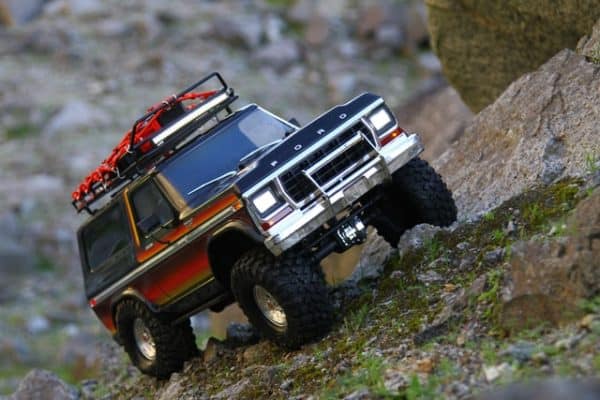Radio-controlled cars are fun and have exceptional abilities. There are sightings of RC cars in parks or even RC planes and boats. Learning about these incredible toys, which come in various shapes and sizes, is fascinating. RC cars are typically made of plastic or metal and can be electric or gas-powered. Even though the mechanism of different vehicles differs, the RC car parts are the same for almost all the models.

Working
There are four significant parts to an RC car:
- Transmitter: It dispatches radio waves to the receiving device.
- Receiver: The receiving device consists of a circuit board and an antenna inside the car. It turns on the motors inside the vehicle after receiving the signal from the transmitter.
- Motors: It is the engine of an RC car that can revolve the wheels while driving the vehicle and servos that steer the direction.
- Power source: It provides the primary power source to the machine.
An RC car is powered by the workings of rechargeable batteries or regular batteries. After switching the device, the receiver gets the signal from the transmitter to turn on the motors. According to the signal, the motor causes the wheels or the car’s steering to turn.
Main Components
The transmitter and the radio control are the main RC car parts in charge of the entire functioning. A deeper insight into each component will explain an RC car’s functioning.
● Transmitter
The hand-held device of an RC car has all the tools and the transmitter. The transmitter will then send a signal to the receiver of the car according to the command given by the user. The receiver receives this signal. The transmitter of an RC car is powered by a low voltage battery, the power source for the controller to send the transmissions.
The connecting wire is the primary difference between a remote-controlled and a radio-controlled car. While a remote-controlled car is connected to the controller by a wire, a radio-controlled car is not controlled by a wire.
An RC car operates at 27MHz or 49MHz, and a label designates the frequency range. A full-range controller has multiple options. A controller with a single function can only make the car go forward and backward according to the trigger. Advanced RC cars also use two joysticks for precision and balance.
● Radio Control
The radio control has the trigger that makes an RC car move. After one presses the trigger, it completes a circuit joined to the Integrated Circuit. A fixed rhythm of electrical pulses causes a short cluster of synchronized pulses after the circuit completion. The synchronized pulses are followed by a pulse sequence that notifies the receiver about the information. The receiver receives the pulses at 700-microsecond breaks.
The burst of the waves from the transmitter oscillates with a repetition of several million cycles per second. After receiving the signal, trash signals are blocked. The proper signals are converted to an electric pulse directed to the Integrated Circuit. The pulsing rhythm moves the motor and gives the car enough torque.
● Other Components
- In an RC car, one can find an antenna, several motors, a circuit board, and rechargeable batteries.
- The circuit board is built with diodes along with resistors and capacitors. An Integrated circuit is attached to the board, and the receiver has a shining object that will oscillate at a particular frequency.
- The Integrated circuit regulates the batteries that power the motors.
Final Thoughts
The working of an RC Car is simple. One can quickly assemble their own with RC car parts and a kit. Overall, it is a fun device for everyone out there.
 Gearfuse Technology, Science, Culture & More
Gearfuse Technology, Science, Culture & More


